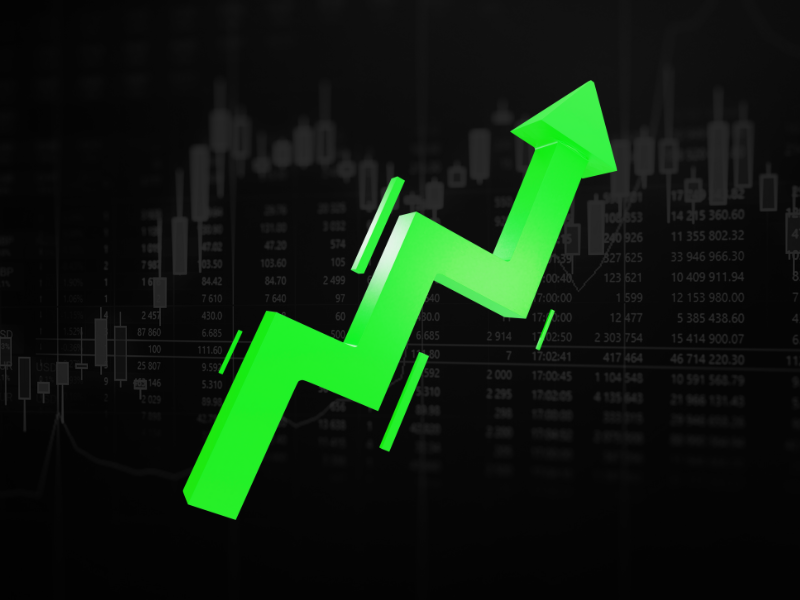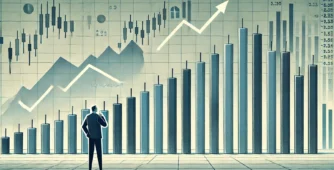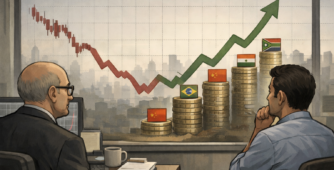How Long Does it Take for the Market to Recover after Hitting the 200 DMA
In this article, we will explore the historical data to understand how long it takes for the market to achieve a fresh all-time high after hitting the 200-day moving average (DMA). The current market situation shows that the Nifty is falling and approaching its 200 DMA, which has caused concern among investors.
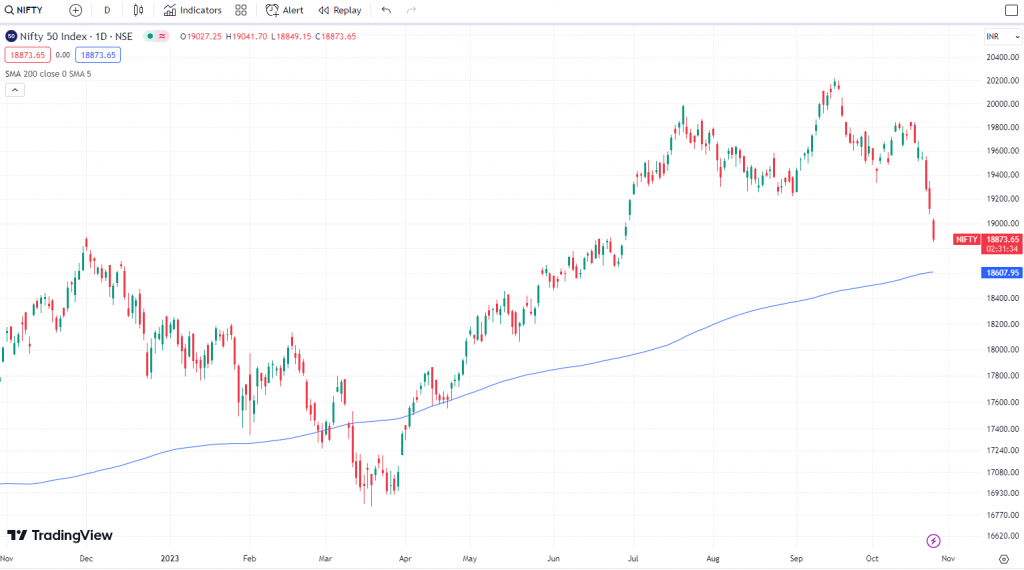
However, by analysing the data from the past few years, we can gain some insights into the potential recovery timeline.
Starting from 2016, we observe a consistent pattern. Each time the market hit an all-time high and subsequently came down to the 200 DMA, it took around four to five months to reach another new all-time high. This trend continued, with the market going back below the 200 DMA and then making new highs within six to nine months. Of course, the COVID-19 pandemic disrupted this pattern, but if we exclude that event, the market would have likely reached a new high within eight or nine months after dipping below the 200 DMA.
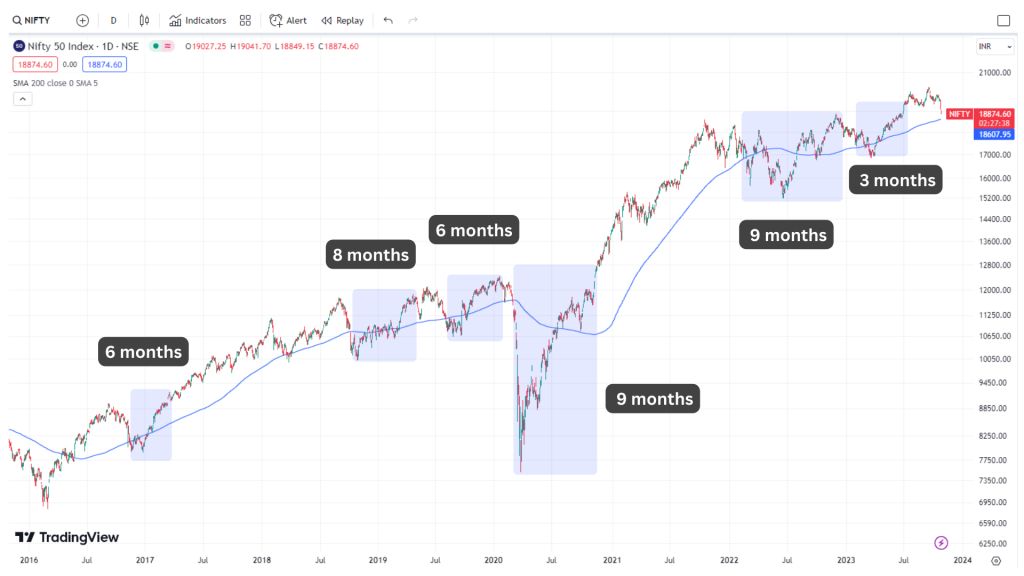
In the longer-term analysis, we can see that the breach of the 200 DMA in February 2022 resulted in the longest recovery timeline. It took approximately nine months to make a new all-time high after going below the 200 DMA. Following that, the market went below the 200 DMA again in January 2023, and it took another 3 months to reach a new high in June 2023.
Based on this historical data spanning the past six to seven years, when the market comes close to or dips below the 200 DMA, it typically takes a couple of quarters to recover and establish a new high. While this is a possibility, we need to consider additional factors to form a comprehensive outlook.
To gain further insights, let’s examine the market behaviour in the 2008 financial crisis. In January 2008, the market breached the 200 DMA, and it took about 18 to 19 months to return to the same level, but it took even longer, approximately six years, to form a new all-time high in 2010. However, we must note that during this period, the market experienced a substantial decline and consolidation before bouncing back.
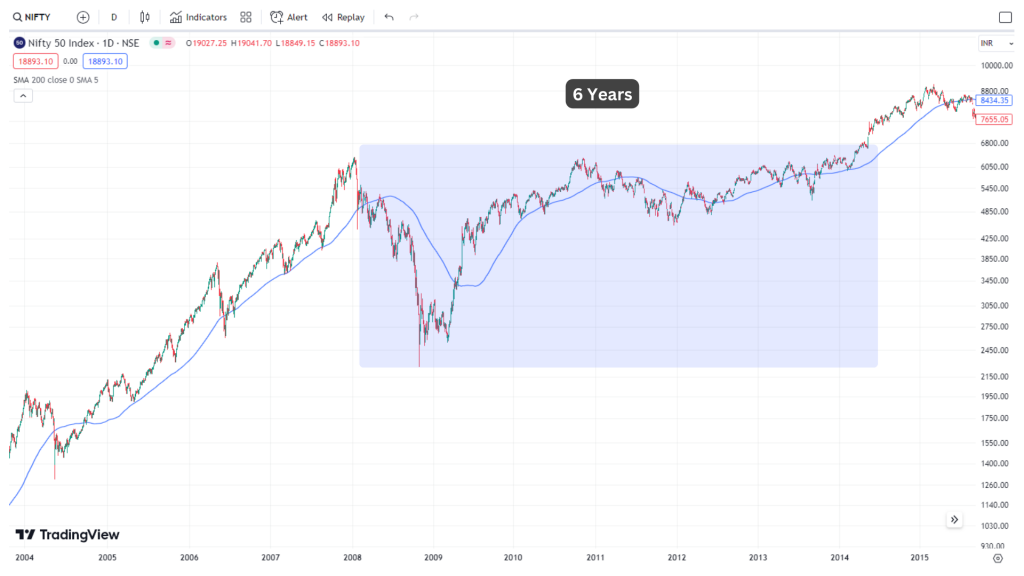
Comparing the present situation to the 2008 crisis, we need to consider the significant difference in market dynamics. After the recent consolidation, the market has already gained around 10%, indicating a more favourable starting point. Additionally, the current rise in the market is not comparable to the previous back rise, which saw nearly a six-times increase. With these factors in mind, it is reasonable to expect a faster resurgence in the market.
Of course, the global market situation can impact the recovery timeline. If global markets become perilous, we may experience further setbacks. However, looking at the domestic scenario independently, there seems to be no fundamental reason why we will not witness a resurgence within the next six months.
It is essential to learn from history and take confidence from previous market cycles. Market corrections and falls are not new phenomena; they have been experienced multiple times in the past. By sticking to our investment strategies and identifying new market leaders when the market turns around, we can expect a rapid comeback.

If you have any questions, please write to support@weekendinvesting.com

